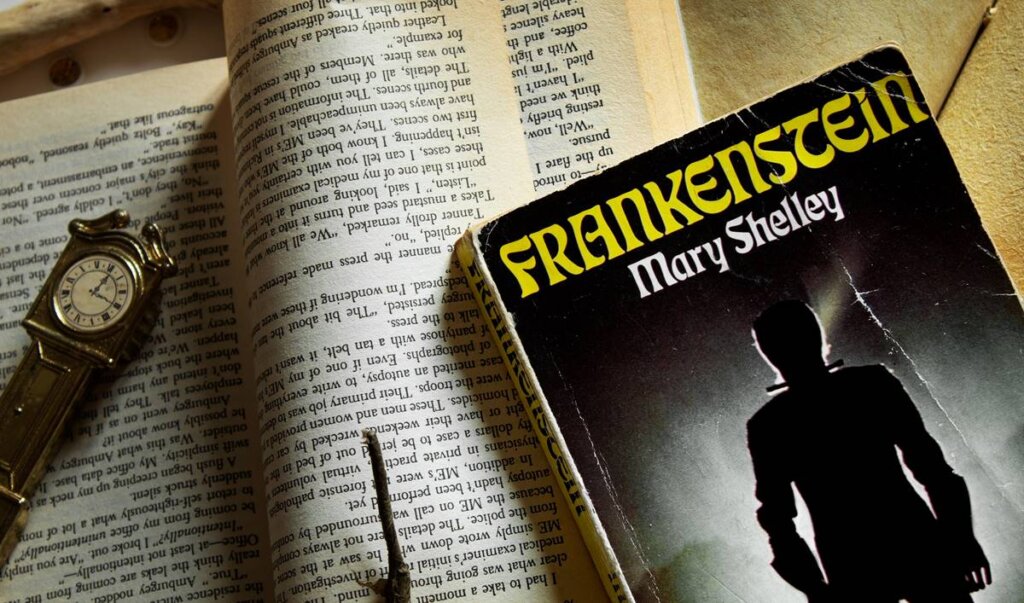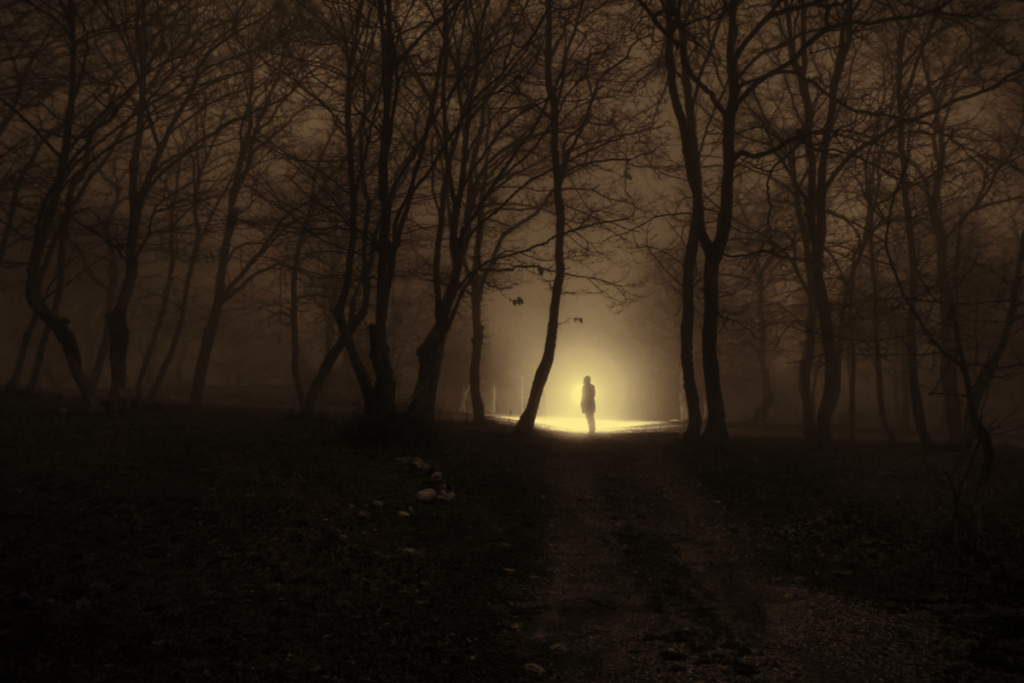Mary Shelley: Advice for Overcoming Dark Moments


Written and verified by the psychologist Valeria Sabater
Some life stories, even if they’re drenched in sadness, are inspiring. One such example was the figure of the author of Frankenstein or The Modern Prometheus, Mary Shelley. Her existence was marked by a passionate but tragic love, that of Percy B. Shelley. It was a relationship that was tinged with innumerable ups and downs due to the poet’s dalliances with other women.
One of Mary’s constant efforts was to get her husband’s poetry recognized. Indeed, she often prioritized his work over her own. That said, she never stopped creating and giving free rein to her own thoughts and creativity. She had an excellent education and one of her father’s obsessions was that she should be trained in the most diverse subjects.
Her mother was the feminist philosopher and writer, Mary Wollstonecraft, who died shortly after giving birth. Her father was the novelist, journalist, and philosopher William Godwin. Mary Shelley dazzled the world with her classic Gothic works, but she was also an example of how suffering traces our destinies with invisible ink. In fact, her life was marked by several tragedies that she faced with a rather special mentality that’s worth remembering.
“There is but one solution to the intricate riddle of life; to improve ourselves, and contribute to the happiness of others.”
-Mary Shelley-

Mary Shelley and why life is always worth living
“Frankenstein is the most wonderful work that has been written in twenty years. You have cultivated your mind in such an admirable way that you have become a great and successful author. If you can’t be independent, who can be?” These words were pronounced by William Godwin to his daughter. Clearly, he was aware that her work would form part of the history of literature.
However, beyond Frankenstein, there’s another book by Mary Shelley that’s well worth our attention. It’s The Last Man, published in 1826. This is an amazing dystopian novel set in 2092. That’s the date on which the tercentenary of the birth of her beloved husband, Percy B. Shelley, will be celebrated.
The book is about a terrible pandemic that’s put an end to humanity. Only one young man, Lionel Verney, has survived. This lonely and idealistic being remembers his past, making a prophetic analysis of where society may lead. These pages contain both pessimism and hope. The style of writing is poetic yet stoic at the same time. It acts as a soothing balm, conveying the idea of overcoming adversity.
“To live, according to this sense of the word, we must not only observe and learn, we must also feel; we must not be mere spectators of action, we must act; we must not describe, but be subjects of description.”
-Mary Shelley-
In the midst of darkness, find a purpose
When Mary Shelley wrote The Last Man, she was going through the worst moment of her life. She was dealing with depression due to several miscarriages, the death of three of her young children from infectious diseases, and deep grief over the loss of her husband.
Percy B. Shelley set out on July 8, 1822, from the Livorno coast with two friends on a sailing ship. Ten days later, their bodies were washed up on the Viareggio coast. Lord Byron cremated his friend on that same beach. At that moment, the darkest stage of Mary’s life began. Although she remained active, raising her surviving son, and writing and sharing time with her friends, nothing was the same anymore.
As a matter of fact, the protagonist of The Last Man constantly wondered whether life was worth living. The story suggests how, in a completely devastated world, the importance of returning home to reformulate one’s aims. Mary Shelley’s aim was to make her husband a poetic icon through posthumous publication and promotion of his work.
“Nothing contributes so much to tranquilize the mind as a steady purpose – a point on which the soul may fix its intellectual eye.”
-Mary Shelley-

Improving and making others happy
The protagonist of The Last Man, Lionel Verney, was the alter ego of Mary Shelley. In a lonely world in ruins with no sign of another human being, the protagonist dedicates himself to observing the beauty of nature. It doesn’t take long for him to be enchanted by its streams, trees, flowers, and leafy forests and by the subtle transformation with the passing of each season.
It’s there, in the scenario of natural balance, where he discovers how resilient the earth is. He finds out that, despite the desolation surrounding him, beauty emerges in an admirable way. Moreover, he becomes aware that the human being also has the capacity to flourish and transform into something good, into something beautiful.
In dark moments, we all have the opportunity to flourish and improve ourselves. Far from being trapped by feelings of resentment for our losses, or anger for what’s been taken from us, it’s preferable to give our best and try to make others happy.
Life will always be an intricate enigma. But, if we contribute to the common good, it’ll possess greater meaning and significance. That’s the key.
Final note
Mary Shelley passed away at the age of 53 from a brain tumor. She’d led a full life, dedicated to the one thing she loved even more than her husband -literature. Her father educated her so that she’d have a free mind. Therefore, she was able to make writing her way of life and her mechanism of freedom.
Percy B. Shelley also encouraged Mary to gain her own reputation in the world of literature. She succeeded. She was also successful in her purpose to make her husband an icon of poetry. Mary Shelley wasn’t only the author of Frankenstein. She was one of the most outstanding figures of romanticism, to be admired for her attitude, charisma, and intelligence.
All cited sources were thoroughly reviewed by our team to ensure their quality, reliability, currency, and validity. The bibliography of this article was considered reliable and of academic or scientific accuracy.
- Fisch, Audrey A., Anne K. Mellor y Esther H. Schorr, eds. The Other Mary Shelley: Beyond “Frankenstein”. Nueva York: Oxford University Press, 1993.
- Jump, Harriet Devine, Pamela Clemit y Betty T. Bennett, eds. Lives of the Great Romantics III: Godwin, Wollstonecraft & Mary Shelley by Their Contemporaries. Londres: Pickering & Chatto, 1999
- Schor, Esther, ed. The Cambridge Companion to Mary Shelley. Cambridge: Cambridge University Press, 2003.
- Wake, Ann M Frank. “Women in the Active Voice: Recovering Female History in Mary Shelley’s Valperga and Perkin Warbeck“. Iconoclastic Departures: Mary Shelley after “Frankenstein”. Essays in Honor of the Bicentenary of Mary Shelley’s Birth. Ed. Syndy M. Conger, Frederick S. Frank y Gregory O’Dea. Madison, NJ: Farleigh Dickinson University Press, 1997
This text is provided for informational purposes only and does not replace consultation with a professional. If in doubt, consult your specialist.








